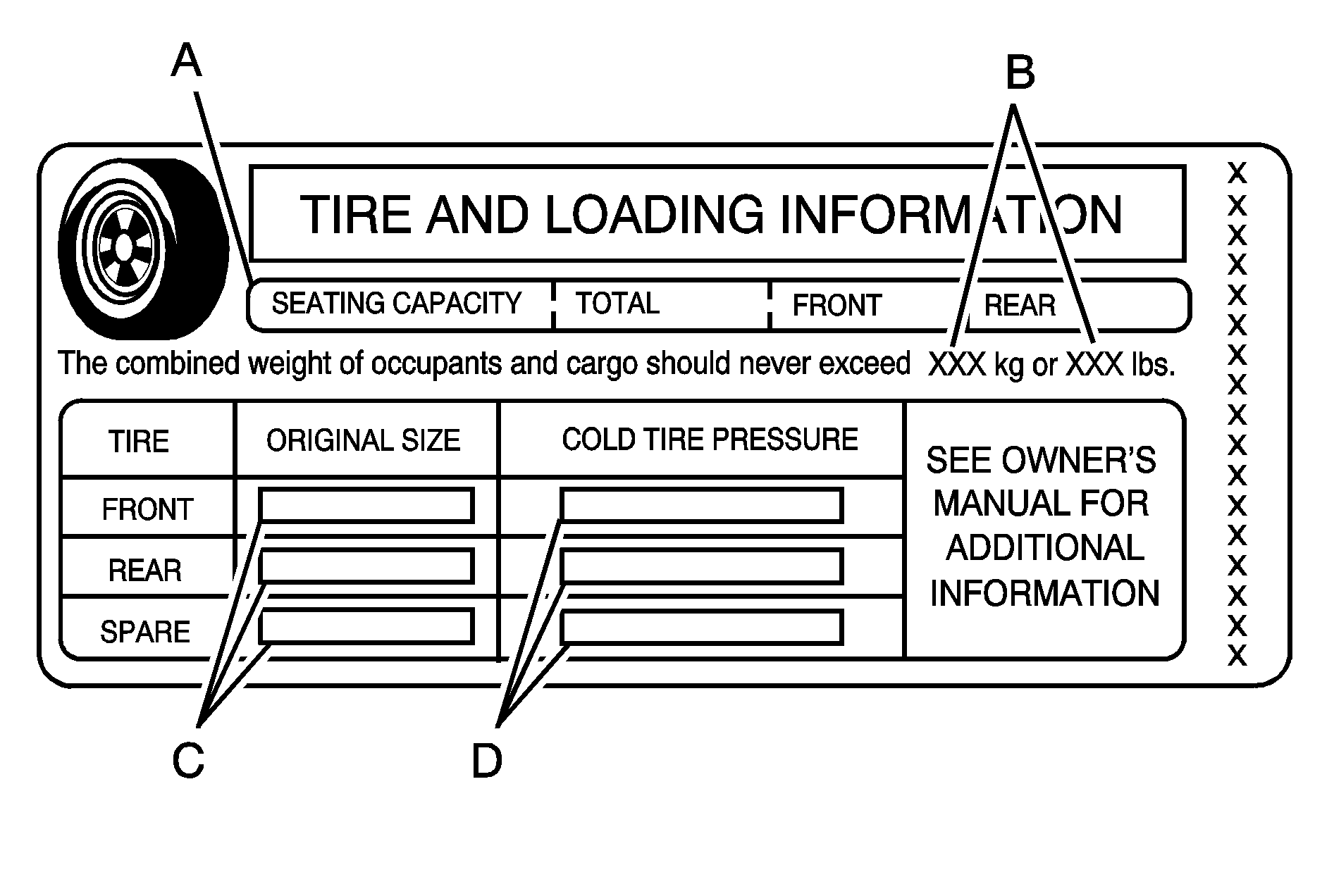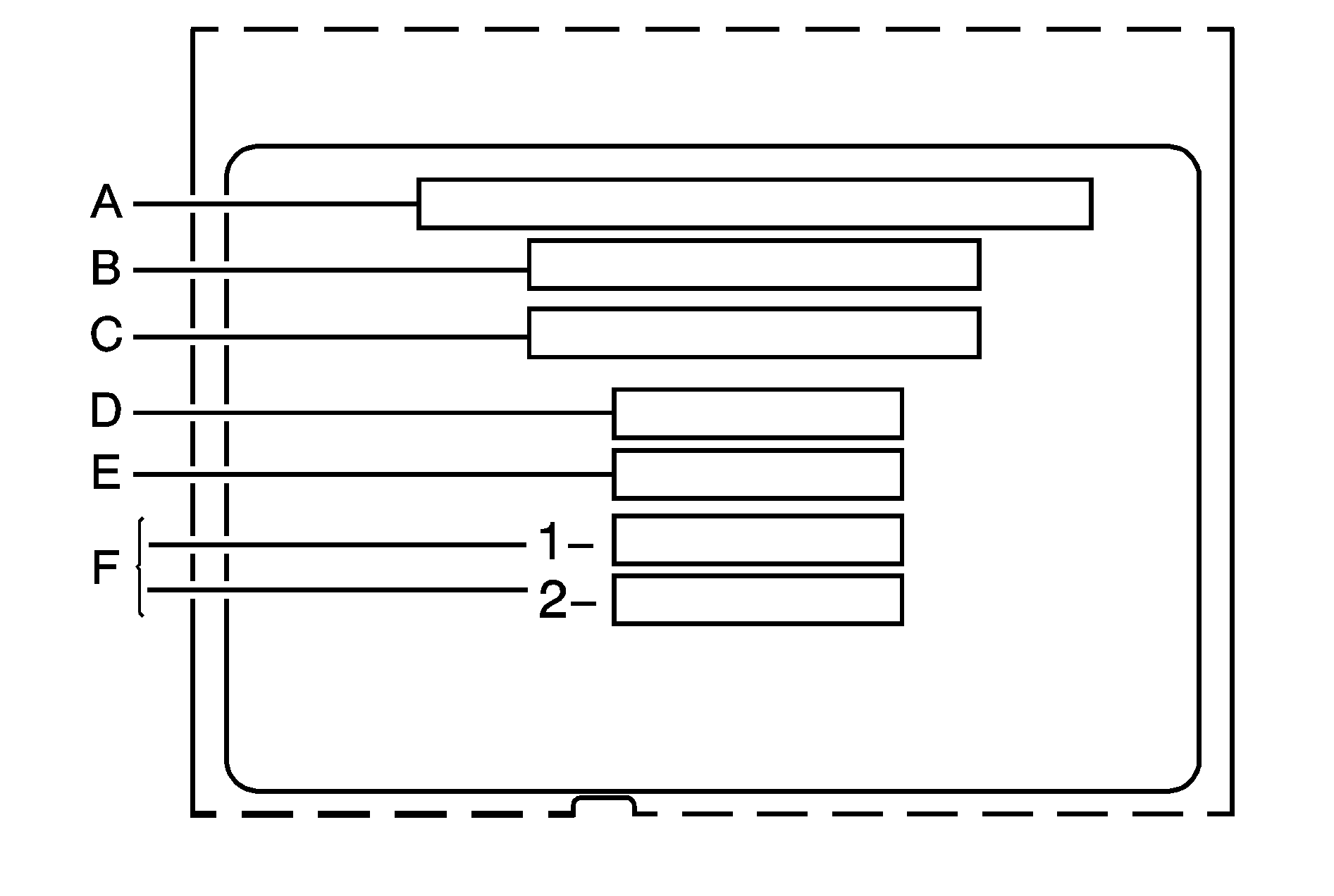It is very important to know how much weight your vehicle can carry. Two labels on your vehicle show how much weight it can properly carry, the Tire and Loading Information label and the Certification label.
Caution: Do not load your vehicle any heavier than the Maximum Laden Mass of Vehicle (MLMV), or either the maximum front or rear permitted mass of each axle. If you do, parts on your vehicle can break, and it can change the way your vehicle handles. These could cause you to lose control and crash. Also, overloading can shorten the life of your vehicle.
Tire and Loading Information Label
Label Example

A vehicle specific Tire and Loading Information label is attached to the center pillar (B-pillar) of your vehicle. With the driver's door open, the label can be found attached below the door latch. This label shows the number of occupant seating positions (A), and the maximum vehicle capacity weight (B) in kilograms and pounds. The vehicle capacity weight includes the weight of all occupants, cargo, and all nonfactory-installed options.
Refer to your vehicle's Tire and Loading Information label for specific information about your vehicle's capacity weight and seating positions. The combined weight of the driver, passengers, and cargo should never exceed your vehicle's capacity weight.
The Tire and Loading Information label also shows the size of the original equipment tires (C) and the recommended cold tire inflation pressures (D). For more information on tires and inflation see Tires and Inflation - Tire Pressure .
Certification Label
Label Example

Vehicle Manufacturer
Whole Vehicle Type Approval Number
Vehicle Identification Number (VIN)
Maximum Laden Mass of Vehicle
Maximum Laden Mass When Towing
Maximum Permitted Mass of Each Axle
A vehicle specific Certification label is attached inside the rear compartment area of your vehicle, on the passenger side or on the vehicle's center pillar (B-pillar) below the vehicle's door latch. The Maximum Laden Mass of Vehicle (MLMV) includes the weight of the vehicle, all occupants, fuel and cargo. Never exceed the MLMV for your vehicle, or the maximum permitted mass for each axle. To find out the actual loads on your vehicle's front and rear axles you need to go to a weigh station and weigh your vehicle.
The maximum laden mass when towing a trailer identifies the trailering capacity of your vehicle. Your vehicle is neither designed or intended to tow a trailer.
Caution: Do not load your vehicle any heavier than the Maximum Laden Mass of Vehicle (MLMV), or either the maximum front or rear permitted mass of each axle. If you do, parts on your vehicle can break, and it can change the way your vehicle handles. These could cause you to lose control and crash. Also, overloading can shorten the life of your vehicle.
Notice: Overloading your vehicle may cause damage. Repairs would not be covered by your warranty. Do not overload your vehicle.
Caution: Things you put inside your
vehicle can strike and injure people in a sudden stop or turn, or in a crash.
• Put things in the rear area of your vehicle. Try to
spread the weight evenly. • Never stack heavier things, like suitcases, inside
the vehicle so that some of them are above the tops of the seats. • Do not leave an unsecured child restraint in your
vehicle. • When you carry something inside the vehicle,
secure it whenever you can.
If you put things inside your vehicle -- like suitcases, tools, packages, or anything else -- they will go as fast as the vehicle goes. If you have to stop or turn quickly, or if there is a crash, they will keep going.
